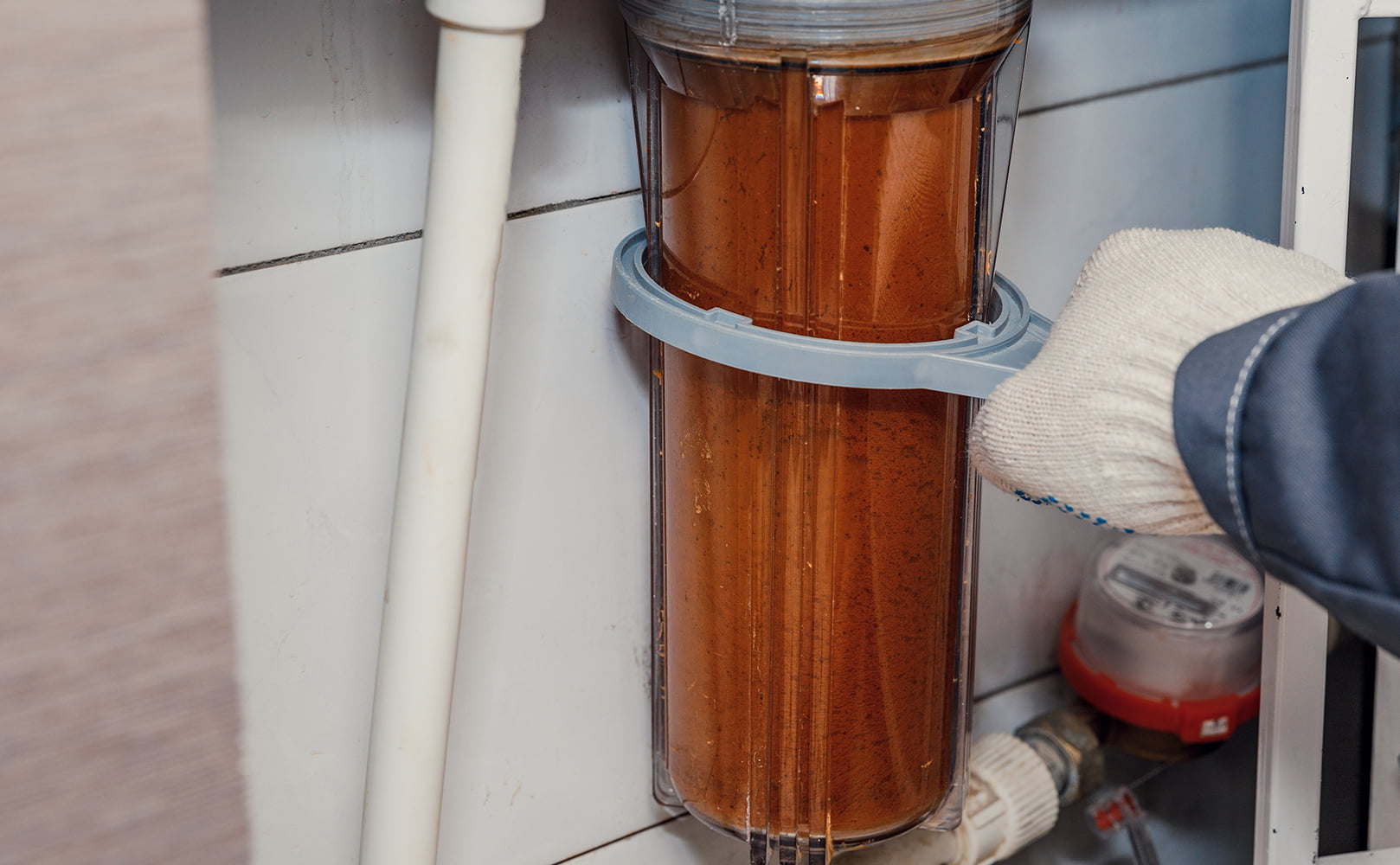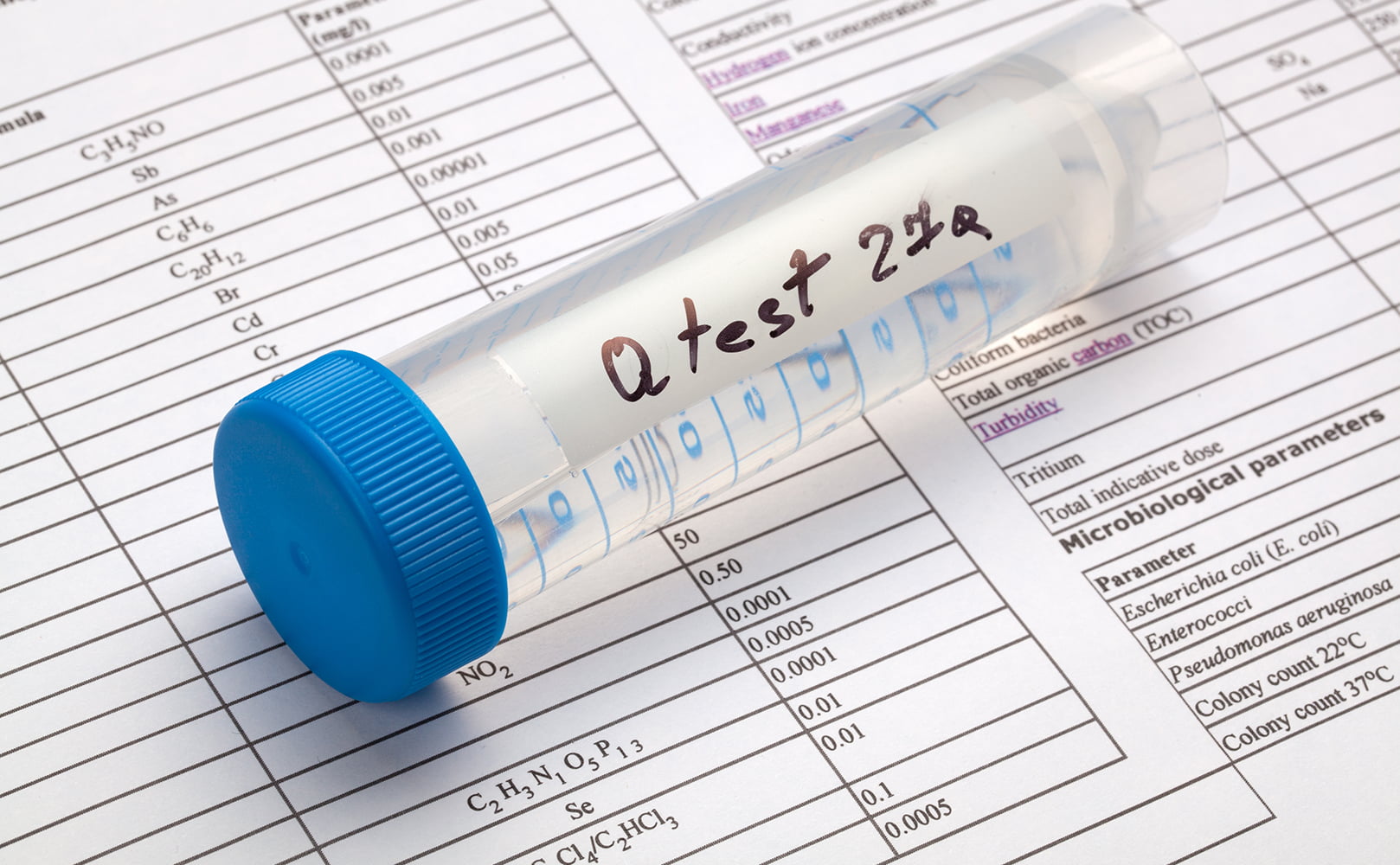Sediment Filter Clogging Quickly? Here’s What to Do!
Written by: Alexandra Uta // Last Updated: Nov 7, 2022
This page may contain affiliate links. If you buy a product or service through such a link we earn a commission at no extra cost to you. Learn more.
Sediment filters protect you and your home from dust, sand, and other particles in your water supply.
But if your sediment filter clogs quickly, it’ll be less effective in filtering water.
In this article, we’ll show you what to do when your sediment filter clogs quickly. We’ll also talk about what may cause the clogging in the first place.
Key Takeaways
Fixing a clogged sediment filter depends on the cause of the clogging. Here are some common causes of clogging and the actions to take:
- Old age: If your sediment filter is old, replace it.
- Sediment: Wash/backwash the filter.
- Organic matter: Unclog with a chemical cleanser.
- Minerals: Remove scale deposits with a descaling solution.
- Rust: Remove rust with a rust removal product.
Clogged Sediment Water Filter? Here’s What to Do
The first thing you need to do when your sediment water filter is clogged is to figure out the cause. When you know the cause of the clogging, you’ll be a step closer to fixing it. Here are some common contaminants that clog filters and how to handle them:
- Sediment: The most obvious! If your filter is clogged with sediment, you can unclog it by backwashing or cleaning by hand.
- Organic matter: If your filter is clogged with organic matter, you’ll need a chemical cleanser to unclog it. You can get a chemical cleanser on amazon or your local store.
- Minerals: Minerals like magnesium and calcium can also clog sediment filters. When this happens, you could use a descaling solution. Descaling solutions dissolve the mineral deposits, making it easier to get rid of them.
- Rust: Rust is a common culprit with clogged sediment filters. If your sediment filter is clogged with rust, your best bet is to use a rust removal product. You can find them at your local hardware store or even online. It’s not difficult to use – simply follow the instructions on the package.
Important note: Your sediment filter could be clogged because of its old age. If your filter is due for replacement, it’s better to change it as soon as possible rather than trying to artificially prolong its life using the solutions listed above.
Why Does My Sediment Well Water Filter Clog? And How?
Your sediment well water filter might clog for several reasons. We’ve listed some of them below:
Sediment
Well water typically has a lot of sediments. These sediments come from erosion runoff and decomposed organic matter etc. While it’s normal to have sediment in your well water, too much can overwhelm your pre-filter, causing it to clog overly quickly.
Besides, old wells are more prone to excess sediment than new wells. This is due to the build-up that accumulates in old wells over time. In addition to clogging filters early, excess sediments can also cause the well pump to overwork.
Algae and Bacteria
If your well water isn’t treated, it could be vulnerable to algae and bacteria infestation. Algae and bacteria thrive in wet environments. They can multiply with incredible speed and clog every pore of your sediment filter.
Unfortunately, bacterial contamination can expose you to several diseases, too. Algae in your water may not always cause harm to your health, but it can cause your water to appear brown or green, making it impossible to use.
Hardness Minerals
Most well water contains a lot of hardness minerals like calcium and magnesium. These minerals can accumulate and clog your filters. Although hardness minerals aren’t harmful to health, they lead to problems like scale build-up in pipes and breakdown of water-using appliances.
The Dangers of a Clogged Sediment Filter
Using a clogged sediment filter can lead to several problems.
- Because clogged sediment filters are less effective at filtering, they may supply homes with dirt-laden water.
- Clogged filters are also a breeding ground for bacterial growth. These bacteria can cause skin infections, gastrointestinal problems, and other negative health effects.
- Clogged sediment filters may cause well pumps and pressure tanks to work harder, potentially leading to strain and eventual breakdown.
- A clogged filter will reduce water pressure throughout your entire home.
How Do You Prevent a Sediment Water Filter from Clogging?
Unfortunately, there’s no straight way to prevent your sediment water filter from clogging. But there are ways to manage clogging. You could:
- Add extra pre-filtration stages to reduce the contaminant load on the filter in question.
- Clean the filter regularly.
- Replace the filter whenever it gets clogged which is the most obvious solution. Replacing sediment filters according to schedule protects you and your home from dirty water.
Get Your Water Tested
Testing your water helps you know the contaminant responsible for clogging your sediment filter. Based on the findings, you could refine your water filter setup or take other preventing measures.
There are different ways to test your water. You can:
Test at a certified lab:
Testing your water at a lab is the best way to get detailed and 100% accurate results. However, you can’t run the test at just any lab; you must use an EPA-certified lab.
The EPA has specific standards that all labs must meet. To find an EPA-certified lab near you, visit the EPA website. Many counties have multiple approved labs, so it’ll be easy to find one near you.
Contact a water treatment company:
You could also try a water treatment company. They usually offer free tests to current and potential customers. However, some companies may not be honest with their test results, so you’ll need to read tons of reviews before choosing the company for your test.
Use a test kit:
You can use a DIY water test kit if you’d like to test your water without involving anyone else. DIY kits are cheap (but not always accurate). The best part is you don’t need any expertise to run a DIY test. There are clear instructions on the pack for you to follow.
Learn How to Change a Sediment Filter
Changing your sediment filter is essential if you want to control filter clogging. We’ll show you how to change a sediment filter, but first, here are the tools you’ll need:
- Housing wrench
- Bucket
- Replacement cartridge
- Soapy water
Steps to changing a sediment filter:
- Turn off the water supply by closing the valve at the main water line. If you’ve installed an extra valve, close the inlet valve right before your filter.
- Reduce the pressure in the filter system. To depressurize the system, open your faucets and other outlets to let out as much water as possible.
- Close the outlet valve to prevent water from flowing back.
- Double-check the pressure. Ensure that you’re not dealing with too much pressure. Press the pressure relief button on each filter housing to release any excess pressure.
- Unscrew the first housing with your wrench. Remember to have an empty bucket nearby to catch the spill.
- Remove the old filter cartridge from the filter housing and place it in the empty bucket.
- Clean the filter housing: You can skip this step, but we advise you follow this through. The filter housings are typically quite dirty. It’s best to clean them with soapy water. Rinse with clean water afterward.
- Lubricate the O-ring with food-grade silicone grease. You must also check and confirm that the O-ring is in good shape. If it’s defective, then you need to change it.
- Put the new cartridge in the housing and ensure you screw it in tightly.
- Repeat steps 5 to 9 for each filter stage.
- Turn the water supply back on and open the valves.
- Check the system for leaks. If there are any leaks, turn off the water supply and locate the source of the leaks. Check that your connections are tight enough and tighten any loose ones.
- Open your faucets to flush the new cartridge(s) and remove any air from your plumbing.
How Often to Replace
How often you need to replace your sediment filter depends on several factors.
Water Quality and Usage
If your water is highly contaminated, you’ll need to change filters more often. Sediment filters are usually replaced every 3 to 12 months. But if you’re dealing with highly polluted water, you might need to replace yours earlier.
Your water usage also determines how often you should change your filter. The more water you use, the faster your filters clog, and the sooner you’ll need replacement.
Recent Well Work
Well work can cause sediment and mud to accumulate in your water. In some cases, you’ll have your water looking dirty for weeks on end. If this happens, you’ll need to be patient, reduce your water usage for a while, and give the dirt time to settle. You’ll also need to replace your filter earlier than usual.
Pressure Tank Replacement
If you’ve recently replaced your pressure tank, you may need to replace your sediment filter soon. This is because when you replace a pressure tank, the water in the tank is drained out, causing sediment to move into your plumbing.
Weather Effects
Too much rain or lack of rain can affect your well water. When it rains too much, sand and silt rise up in wells, making them more contaminated than usual. When there’s a drought, water tables drop, and your water quality drops too. You’ll need to replace your filters quicker in both scenarios.
If you have any questions about clogged sediment filters please don’t hesitate to leave a comment below!
Information provided on BOS is for educational purposes only. The products and services we review may not be right for your individual circumstances.
We adhere to strict editorial guidelines. Rest assured, the opinions expressed have not been provided, reviewed, or otherwise endorsed by our partners – they are unbiased, independent, and the author’s alone. Our licensed experts fact-check all content for accuracy. It is accurate as of the date posted and to the best of our knowledge.




